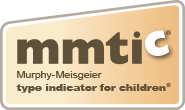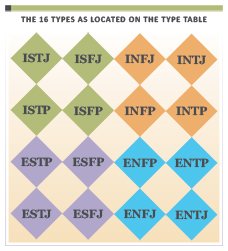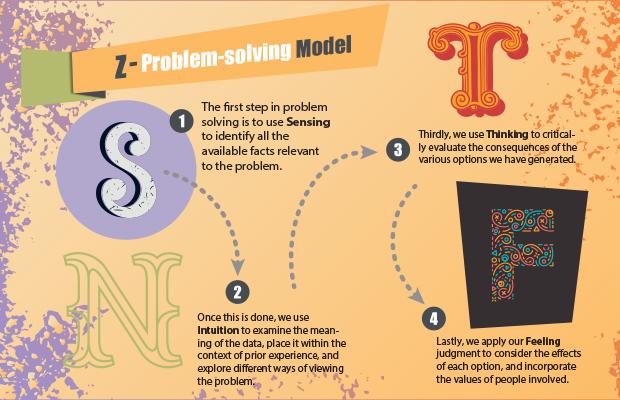The View from Here
My younger sister, Melanie, is almost the complete opposite of me. She can be very stubborn and often says things that seem harsh to others. For example, she tells me immediately if she doesn't like something I am wearing or doesn't agree with something I said:
"That's a really bad color on you."In other words, Melanie is painfully blunt and makes little to no effort to deliver her perspective nicely. Although we have always been close, her communication style used to make it difficult for me to connect with her. I never doubted her loyalty to me, but I would sometimes wonder if she actually liked me.
"No, Louisville is NOT the capital of Kentucky; it's Frankfort. How could you not know that!?"
"Don't put your arm around me, people are watching."
This all changed three years ago when my family moved from Illinois to Maryland. Shortly after we moved, my mom went through Myers-Briggs Type Indicator (MBTI) certification training to grow her business. The MBTI assessment is based on a personality theory that defines 16 different patterns people show in the way they interact with the world, process information, and make decisions. These patterns are based on four personality preference pairs: Extraversion vs. Introversion, Sensing vs. Intuition, Thinking vs. Feeling, and Judging vs. Perceiving.
My mom loves to process information out loud, so she constantly wanted to talk about what she was learning. I was typically the one in our family most interested in what she was explaining, so I asked questions to make sure I understood. She eventually taught me about personality type dynamics and how we all have a dominant personality type preference that is either extraverted or introverted.
Since we both processed the information differently, we were actually able to understand and apply these theories at a much deeper level by learning from each other. I realized how true it is that teaching someone else is the best way to learn.
Finding words to describe everything I already intuitively knew about myself felt incredibly freeing. I discovered that my preferences are ISFP: Introversion, Sensing, Feeling, and Perceiving. My dominant preference is called "Introverted Feeling," which simply means I tend to have a strong sense of who I am and how I feel.
I tend to be detail-oriented and thoughtful. Becoming more aware of these strengths as well as my blind spots has made me a better person. I am less judgmental. In the past I would get frustrated with myself for over-analyzing decisions or being sensitive and not being more outgoing. Now I appreciate these parts of myself and see how they are beneficial. I also see how other people's personalities and perspectives add value to the world, and I am not as easily offended or annoyed.
My new perspective has profoundly improved my relationship with my sister and helped me see her comments the way she sees them, as simply logical rather than mean. A person with her personality type preferences, ESTJ (Extraversion, Sensing, Thinking, and Judging), sees the world objectively and tends to be less aware of how others may perceive their comments.
Understanding personality types has also deepened my relationships with others: my parents, my friends, my peers, and even people I don't know. I now view the world from a different perspective, and I am thankful to say, the view is richer and far more beautiful from here.



_thumb.png)





























































.png)

_thumb.png)

x.png)
.png)


